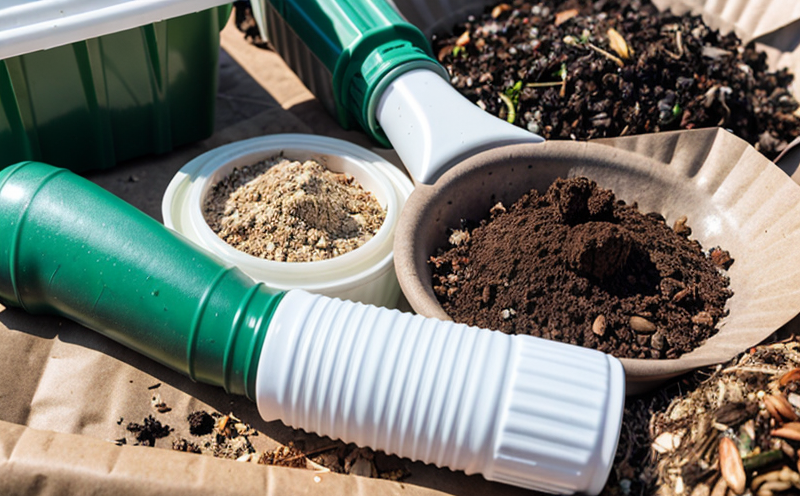EN 13720 Electrical Conductivity of Organic Waste
The European Standard EN 13720:2008 provides a method for determining the electrical conductivity of organic waste. This standard is particularly relevant in sectors such as waste management, recycling, and composting where understanding the physical properties of organic materials can enhance process optimization and product quality.
The test measures the ability of an aqueous extract from the organic waste to conduct electricity. The principle behind this method lies in the presence of ions within the waste material that facilitate electrical conductivity. This property is crucial for assessing the suitability of organic waste as a raw material or feedstock, especially when considering its use in composting and anaerobic digestion processes.
Organic waste sources may vary widely, including food scraps, yard clippings, and green waste. The electrical conductivity test helps to establish whether these materials are suitable for specific applications by providing insights into their chemical composition and potential environmental impact. For instance, higher conductivity values might indicate a greater presence of salts or other conductive substances, which could influence the behavior during composting.
The standard specifies detailed procedures for sample preparation, extraction, and measurement of electrical conductivity. Proper specimen preparation involves homogenizing the organic waste in distilled water according to specified ratios. The extracted solution is then used for measuring conductivity using a suitable instrument such as a conductivity meter or probe.
Acceptance criteria are based on predefined limits set by the standard. Compliance with these limits ensures that the tested material meets specific quality standards, which can be critical in regulatory environments where organic waste processing must comply with environmental protection regulations.
Industry Applications
| Application | Description |
|---|---|
| Composting | Determining the suitability of organic waste for composting processes. |
| Anaerobic Digestion | Evaluating the potential of waste as a feedstock in anaerobic digestion plants. |
| Recycling | Assessing raw materials derived from organic waste for recycling purposes. |
| Environmental Impact Assessment | Evaluating the environmental impact of different types of organic waste. |
Quality and Reliability Assurance
The accuracy and reliability of EN 13720 electrical conductivity testing are paramount in ensuring consistent quality across different organic waste streams. Rigorous adherence to the standard’s procedural guidelines minimizes variability, leading to more reliable test results.
Proper specimen preparation is critical; any deviation from the specified extraction process can lead to inaccurate measurements. Calibration of instruments using certified reference materials ensures that conductivity readings are precise and repeatable.
Data analysis plays a key role in interpreting the results correctly. Statistical tools may be employed to assess the variability within batches or over time, helping stakeholders make informed decisions about waste management strategies.
Compliance with EN 13720 not only supports internal quality control but also aligns with broader regulatory frameworks aimed at sustainable resource recovery and environmental protection.
Competitive Advantage and Market Impact
- Enhanced Product Quality: By ensuring that organic waste meets the conductivity standards, companies can produce higher quality compost or biofuel.
- Informed Decision-Making: Accurate electrical conductivity data aids in selecting the right feedstocks for different applications, optimizing resource use.
- Regulatory Compliance: Meeting industry standards enhances a company’s reputation and trustworthiness among regulators and consumers alike.
- Cost Efficiency: Understanding the properties of waste materials can lead to more efficient processing methods, reducing operational costs.





